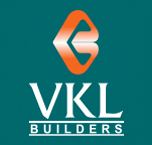Application of other material on building walls to provide skin or layer intended to control the infiltration of weather elements or even beautification of interior style is known as cladding. Cladding can be used in both interior and exterior walls. If cladding used for interior then it is called as interior cladding and for exterior its called exterior cladding.
Wood: Wood is one of the usual building products used for cladding. The wooden blocks of teak, mahogany etc is used for cladding. These are applied on wall using heavy glue or screws.
Positive: Maintain beauty, Natural, Lessen heat
Negative: Less water resistance
Stones: For modern architect structural building, stone cladding is more suited. Granite, Marble, sand stone, slate stone, lime stone etc can be used for wall cladding. Cladding stones are also available in markets like readymade tiles. These readymade cladding stone are applied on walls using cement mix or stone adhesive. The cost comes around 200 rupees and more per sq feet.
Positive: looks natural, available in different colors and designs
Negative: Not resist from dust and algae, have to clean periodically
Tiles: Cladding tiles can be used in both interior and exterior walls. Cladding tiles in ceramic, vitrified types are easily available in markets. Cladding stone will get the same finishing of wood, stone, metal etc… Using digital printing, the cladding tiles can be printed in different shades and designs based on your interior & exterior architecture and style. These tiles cost around 50 rupees and more per sq feet.
Positive: Low budget
Negative: color fades if used on exterior walls
Fiber cement board: Fiber cement board is one of the cladding materials made out of cellulose fiber, cement and sand. They are available in sheets of varying sizes (4 × 8 feet and 3 × 5 feet) and also vary in thickness, ranging from 3 mm to 20 mm. This cladding material can be fixed using heavy glue or scrued on walls. These are available in different designs of wood, stone etc… that enables the owners to choose designs that best suit their needs and tastes. It cost around 40 rupees and more per sq feet.
Positive: Weightless, less maintenance & easy to fix
Negative: does not resist to moisture if applied in exterior
High Pressure Laminate (HPL): High Pressure Laminate can be called as new generation cladding material. This cladding material is made out of refined wood and resin. This is also available in sheets of varying sizes like (4 × 8 feet and 3 × 5 feet). Using machine this sheet can be cut in different shapes. Using Computer numerical cutting (CNC) attractive designs can be applied. The HPL cladding can be fixed with aluminum or wooden frames and applied on wall using revet and scrues. It cost around 350 rupees and more per sq feet
Positive: Looks good, available more than 80 colors, less maintenance
Negative: color fades gradually
Metal: Metals link Zine, Copper etc can be used as cladding materials. For cladding these metals are available both in sheet and stripe size. This metal cladding gives an ethic look for your interiors.
Positive: Looks good and eco friendly
Negative: High budget, have to clean periodically
Glass: Glass cladding is becoming a trend now a days. Using digital printing machines, different designs can be applied based on your interior design and style. Frosting glass designs are also available in markets. This verity style and designed glass pieces using ad cladding gives your interior can typical contemporary look. The glass is fixed using sticky tapes on both sides.
Positive: New generation material, Create contemporary style
Negative: High budget, clean periodically.
